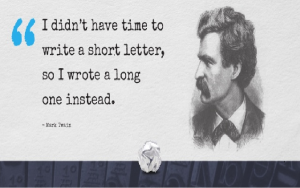Last week I was in Melbourne to join researchers from two different universities, namely the University of Melbourne and La Trobe University. An aim of my visit was to present my research findings and to learn about Higher Education and Medical Education in Victoria. Upon arriving in Melbourne I found I was in the right place to meet this goal, at least that’s been said on most license plates (‘Victoria – The education state).
The first thing I’ve learned is that student admission to Higher Education is quite different in Australia. In contrast to Dutch secondary education, there are no central school exams before going into university. Australian universities use students’ Australian Tertiary Admission Rank-score (ATAR), in which grades and subjects are combined to determine each student’s score. For example, if students get an ATAR of 80 it means that they outperform 80 per cent of students. Practically speaking, this might encourage students to choose their subjects strategically in order to be admitted to the best universities. In addition, admission requirements differ between universities which means that science, for instance, is not a required subject to study medicine. I don’t know yet what this means for students’ prior knowledge and how teaching staff goes about this when students start studying at university.
La Trobe University is a 50-year old university, a teaching-intensive university in the beginning although nowadays a research-intensive university. Students from the faculty of humanities are engaged in research in education in, for instance, the Hallmark program in their second undergraduate year. Within this program students conduct research projects in small groups with the duration of one year. The research projects are typically multidisciplinary, which provides challenges for the staff members supervising the projects, since they are used to research within their discipline. I was invited to present a study on fostering student learning in research supervision. This presentation was live at four other campuses through video streaming, which was quite an experience. Afterwards we’ve discussed how to enhance student learning in research within a limited amount of curriculum time. A different issue at La Trobe is students having difficulties understanding the English language. Students at La Trobe are from diverse cultural backgrounds, which has implications for promoting student learning.
The University of Melbourne is the oldest research-intensive university of Australia and I was invited to present at a research group meeting of the (bio)medical school. What I got from this is that the role of research in Medical Education isn’t as clear as we might think. So there is still some work to do (and this comment is useful for the introduction and discussion chapter of my thesis J ). It could be helpful to think about how research integration could prepare students for clinical work, building upon studies into other clinical roles (e.g., health advocate, communicator, scholar) as these roles are often not too appealing for students during education. Furthermore, we’ve discussed how to integrate research into undergraduate medical education. At the University of Melbourne there are generally no research activities in the undergraduate learning environment, except for the final year when students are expected to conduct an individual research project. This could hamper a positive student learning experience and learning outcomes.
The discussions in both universities might have implications for Higher Education as well as Medical Education. Our shared experiences indicate that further studies are needed to clarify what learning goals medical education aims for integrating research in teaching. Furthermore, our experiences illustrate that it is not that straigthforward to integrate research in learning activities in a way that promotes student learning.
Thanks to Hannah Schuerholz, Jan van Driel, David Clarke, Liz Malloy and all others being so generous with their time, comments and support. I had a great time in Melbourne. For the next two weeks I’ll be visiting Susan Howitt at the Australian National University in Canberra.


 a. Delete articles, adverbs, adjectives, connectives, propositions, and auxiliary verbs
a. Delete articles, adverbs, adjectives, connectives, propositions, and auxiliary verbs



Recent Comments